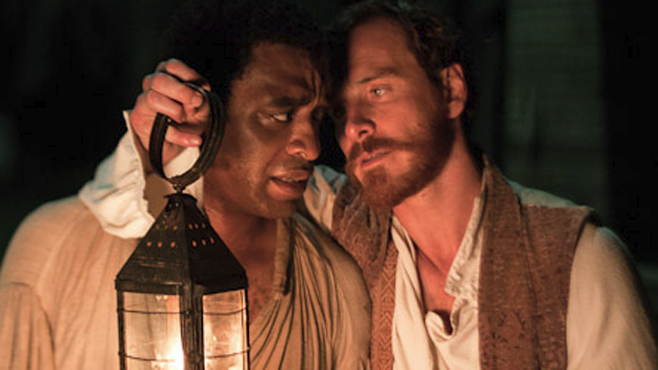
12 Years a Slave is an unsparing, I repeat, unsparing depiction of American slavery. It tells the true story of Soloman Northup, a comfortable Syracuse, New York, free man of color who was kidnapped in 1841 and sold into slavery in the South, where he languished for twelve years. At first, Northup is bewildered and can’t believe what is happening to him, but he is quickly immersed into the horrors of slavery, and remains focused on his own survival in hopes that eventually he can be rescued. As he is traded from slave-owner to slave-owner, we witness his experience. All of the slave-owners are brutal in their own ways, but the last one is also a psychotic sadist (Michael Fassbender). As a result, almost all of 12 Years a Slave’s 134 minutes is the beating, whipping, raping and killing of (and commerce in) enslaved people. It’s an unrelentingly tough watch.
The fine British actor Chiwetel Ejiofor (Dirty Pretty Things) plays Northup, and his outstanding performance carries the film. The other startling performance is by Fassbender (who previously teamed with director Steve McQueen for Shame), whose demented role would be lusted after by the likes of Christolph Walz and Gary Oldman. The acting is uniformly excellent, but I’ll also call out Sarah Paulson as a bitter plantation mistress and Garret Dillahunt (Winter’s Bone, Assassination of Jesse James yada yada, Looper, Killing Them Softly) as a morally weak White trash loser.
12 Years a Slave’s Metacritic rating has shot to an atmospheric 97 because critics are gushing about the groundbreakingly ultra-realistic (and thus horrifying) depiction of slavery by a Hollywood movie (in contrast to the decades of bowdlerized portrayals by the likes of Gone with the Wind). Give the credit to screenwriter John Ridley (who wrote the story in Three Kings).
Yes, 12 Years a Slave is a landmark historical movie. Yes, it is well-made and centered around a superb leading performance. But you should know that it is a very grim viewing experience.
